 Technology peripherals
Technology peripherals
 AI
AI
 Tomorrow's starships, land aircraft carriers, bipedal robots, Xpeng's press conference opened my eyes
Tomorrow's starships, land aircraft carriers, bipedal robots, Xpeng's press conference opened my eyes
Tomorrow's starships, land aircraft carriers, bipedal robots, Xpeng's press conference opened my eyes
On the evening of October 24, Xpeng Motors held the fifth 1024 Technology Day event and released new intelligent driving and intelligent interaction technologies such as Xpeng Smart Home’s new architecture “XBrain” and Xpeng Intelligent Cockpit Xmart OS Dimensity System. technology, and launched a number of new products including the self-developed humanoid biped robot "PX5", as well as integrated flying cars, split flying cars, Xpeng X9, etc.
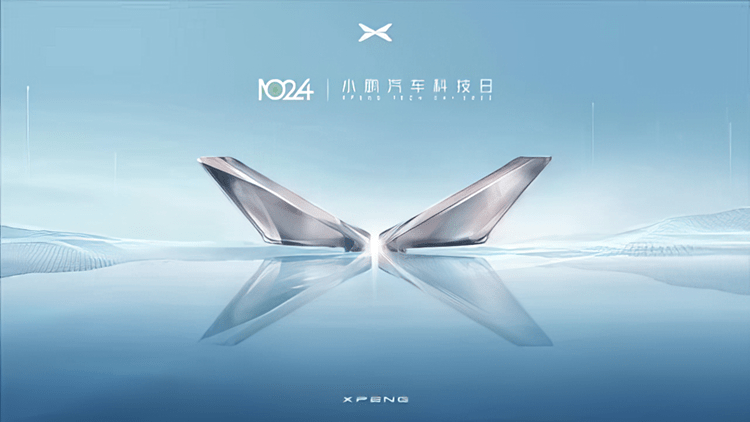
"Be the first to enter the second half of intelligent driving"
In terms of smart driving, Xpeng Motors shared its progress in XNGP and stated that it will "be the first to enter the second half." XNGP urban smart driving using the light map solution will not be limited to the scope of use of high-precision maps and Update timeliness. At the same time, the "AI driving" function is also another "sharp tool" for Xiaopeng Smart Driving.
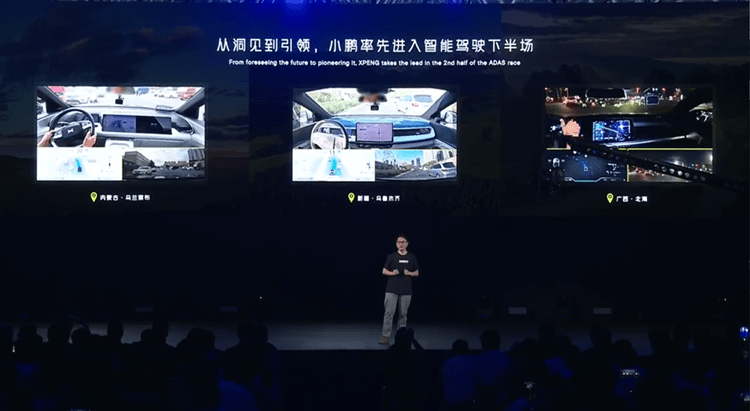
At the press conference, Xiaopeng also shared XBrain, the ultimate architecture for all-scenario intelligent driving. XBrain is composed of modules such as the deep visual neural network XNet 2.0 and the neural network-based control XPlanner. It is the industry's first perception architecture that applies large models and has the ability to understand space and time. Officials say that it can combine time-series continuous analysis of motivations at the planning and control level with more than minute levels, and make timely adjustments based on surrounding environment information to generate the best movement trajectory.

At present, Xpeng XNGP system has the technical capabilities to support urban smart driving nationwide. It has been opened in five cities: Beijing, Shanghai, Guangzhou, Shenzhen, and Foshan. It will be opened in 25 cities by the end of November, and there will be more in the future. More areas will cover the XPeng XNGP system, and by the end of December this number will reach 50 domestic mainstream cities.

New intelligent cockpit system XOS Tianji released
According to He Xiaopeng, as a new generation of cockpit products, the XOS Dimensity system deeply combines intelligent driving capabilities with the application scenarios of the next generation of smart cockpits, ushering in the "era of human-machine co-driving". The system will be equipped with the Snapdragon 8295 chip for the first time, and will bring new upgrades in visual, dynamic effects, interaction and other aspects. It will also support split-screen multi-tasking, XDock, full-scene car-sensing SR and other functions, as well as intelligent voice access to Xpeng The self-developed XGPT Lingxi large model will be launched on the upcoming Xpeng X9. G6\G9\P7i\P7 will also be upgraded to XOS Dimensity through OTA.
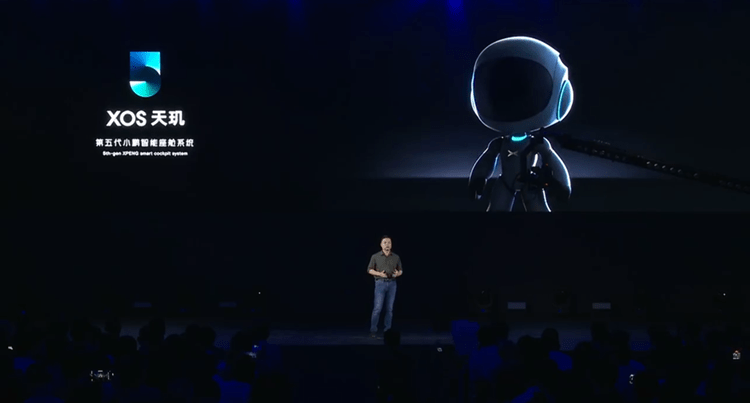
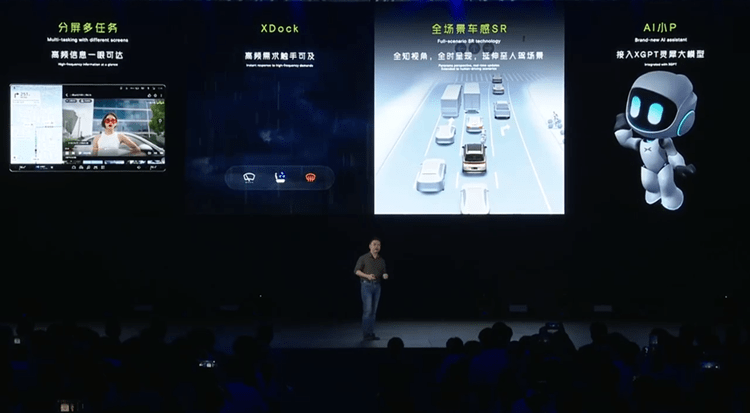
At the Technology Day, He Xiaopeng said that the future of automobile companies is AI. As a leading brand of smart cars in China, Xiaopeng has deeply applied AI large models to empower multiple fields such as R&D, design, intelligent driving and intelligent voice. The next-generation CIB mid-sole integrated die-casting technology that is being pre-researched was demonstrated to us on site. In the future, it will be possible to further improve the vehicle's battery life and further reduce the vehicle cost.
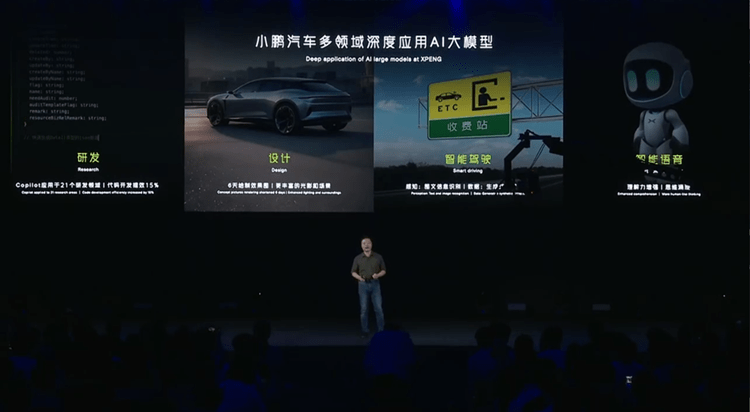
Humanoid bipedal robots, land “aircraft carriers”, and “starships of tomorrow”, Xiaopeng Technology is a bit strong
In addition, He Xiaopeng also introduced us to the bipedal humanoid robot PX5, which the Xiaopeng team spent 5 months self-developed. According to reports, this robot can achieve more than 2 hours of indoor and outdoor walking and obstacle crossing through self-developed high-performance joints; the ultra-lightweight humanoid arm can achieve 11 degrees of freedom with one hand and a holding force of 1kg for two fingers. , providing grasping and wrapping postures for objects of different shapes, with a repeatable positioning accuracy of 0.05mm, a load-to-weight ratio exceeding 0.6, and a maximum terminal linear speed of 1m/s.
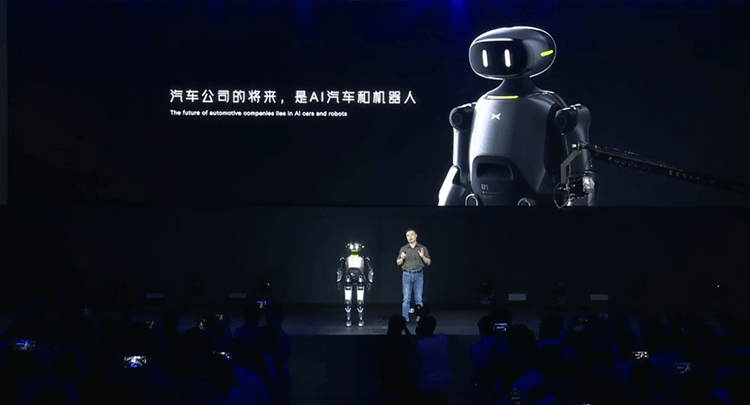
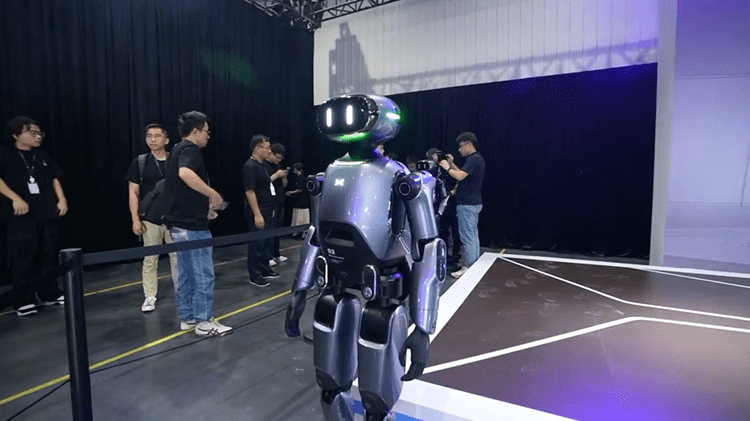
If humanoid robots are still relatively common products at present, then the following two flying cars can be said to be full of technology. At today's press conference, Xiaopeng clearly proposed two development paths for flying cars, namely integrated land and air flying cars and split flying cars. Among them, the integrated flying car adopts the shape of a supercar. The rotors, arms and other flight systems can be automatically folded and completely stored. The steering wheel can also be freely retracted and folded. The relevant person in charge said that this product is planned to be launched within the next 2-3 years at the earliest. Mass production delivery.
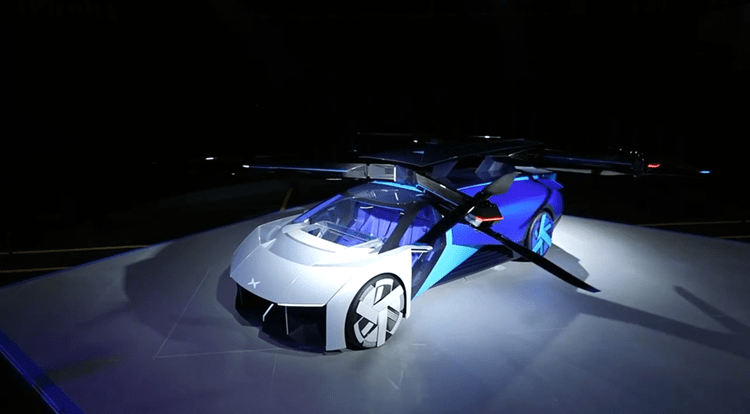
In addition to the integrated flying car, He Xiaopeng also introduced the split flying car. This car uses 6X6 all-wheel drive and an extended-range hybrid design, which can continuously replenish energy for the automatically detached flying body carried behind it. The flying body that applies pure electric vertical take-off and landing technology not only expands the travel of individual users, but also benefits public utilities such as emergency and rescue.
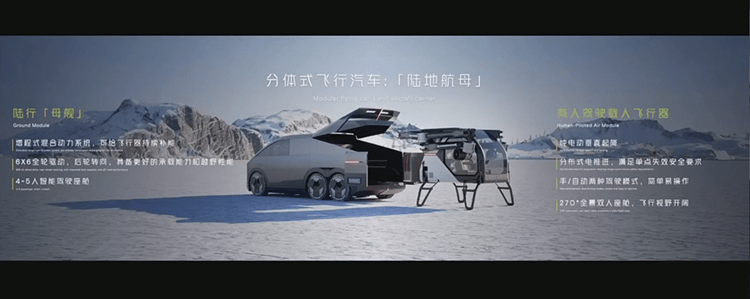
In terms of safety, He Xiaopeng said that the Xiaopeng flying car can "still fly safely even after the dual rotors fail" and is equipped with ultra-low-altitude parachutes, which can quickly eject and deploy multiple groups of large parachutes at an altitude of 50 meters, making it The aircraft landed smoothly at a touchdown speed of 5.2m/s, ensuring that the aircraft body remained intact.
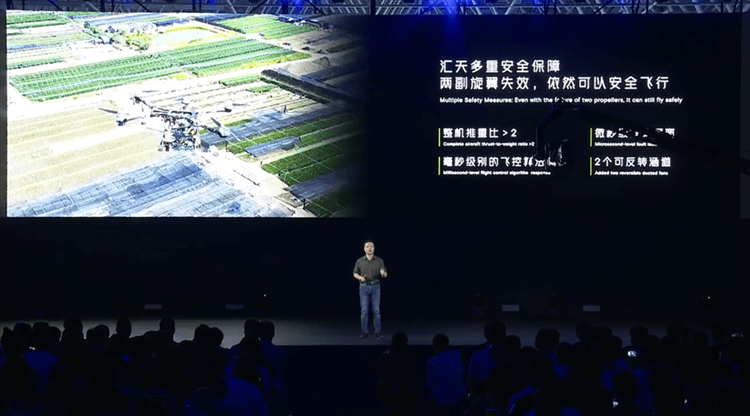
Finally, the much-anticipated first MPV "Xpeng X9" has also been officially unveiled. The car is based on the Fuyao architecture and will be equipped with Xpeng's fifth-generation smart cockpit Xmart OS Dimensity system for the first time, and is equipped with rear wheels. The steering function will be officially launched at the Guangzhou Auto Show to be held soon.
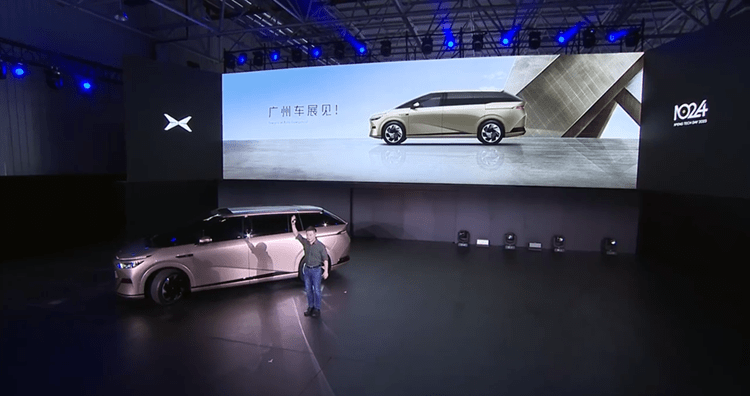
The above is the detailed content of Tomorrow's starships, land aircraft carriers, bipedal robots, Xpeng's press conference opened my eyes. For more information, please follow other related articles on the PHP Chinese website!

Hot AI Tools

Undresser.AI Undress
AI-powered app for creating realistic nude photos

AI Clothes Remover
Online AI tool for removing clothes from photos.

Undress AI Tool
Undress images for free

Clothoff.io
AI clothes remover

AI Hentai Generator
Generate AI Hentai for free.

Hot Article

Hot Tools

Notepad++7.3.1
Easy-to-use and free code editor

SublimeText3 Chinese version
Chinese version, very easy to use

Zend Studio 13.0.1
Powerful PHP integrated development environment

Dreamweaver CS6
Visual web development tools

SublimeText3 Mac version
God-level code editing software (SublimeText3)

Hot Topics
 1377
1377
 52
52
 Experience sharing on using MongoDB to build an intelligent transportation big data platform
Nov 03, 2023 am 09:47 AM
Experience sharing on using MongoDB to build an intelligent transportation big data platform
Nov 03, 2023 am 09:47 AM
Sharing experience in building an intelligent transportation big data platform using MongoDB. With the continuous acceleration of urbanization, urban road traffic problems have become increasingly prominent. How to efficiently manage and optimize urban traffic has become an urgent problem that urban planning and traffic management departments need to solve. The intelligent transportation big data platform emerged as the times require and has become one of the important means to solve traffic problems. This article will share the experience of using MongoDB to build an intelligent transportation big data platform. The intelligent transportation big data platform refers to the collection, storage, processing and analysis of transportation-related data.
 How to implement autonomous driving and intelligent transportation systems in C++?
Aug 26, 2023 am 08:58 AM
How to implement autonomous driving and intelligent transportation systems in C++?
Aug 26, 2023 am 08:58 AM
How to implement autonomous driving and intelligent transportation systems in C++? Autonomous driving and intelligent transportation systems are currently hot topics in the field of artificial intelligence, and their application areas involve many aspects such as transportation, safety protection, and urban planning. This article will explore how to use the C++ programming language to implement autonomous driving and intelligent transportation systems, and provide relevant code examples. Understand the basic principles of autonomous driving and intelligent transportation systems. Autonomous driving systems refer to technology that uses computers, sensors and other equipment to navigate and drive vehicles autonomously. it needs to be perceived in real time
 Tomorrow's starships, land aircraft carriers, bipedal robots, Xpeng's press conference opened my eyes
Oct 25, 2023 am 11:21 AM
Tomorrow's starships, land aircraft carriers, bipedal robots, Xpeng's press conference opened my eyes
Oct 25, 2023 am 11:21 AM
On the evening of October 24, Xpeng Motors held the fifth 1024 Technology Day event and released new intelligent driving and intelligent interaction technologies such as Xpeng Smart Home's new architecture "XBrain" and Xpeng's intelligent cockpit XmartOS Dimensity system. A number of new products include the self-developed humanoid bipedal robot "PX5", as well as integrated flying cars, split flying cars, Xpeng X9, etc. "Be the first to enter the second half of intelligent driving" In terms of intelligent driving, Xpeng Motors shared its progress in XNGP, saying that it will "be the first to enter the second half". XNGP urban intelligent driving using the light map solution will not be limited to high-precision maps Scope of use and update timeliness. At the same time, the "AI driving" function is also another "sharp tool" for Xiaopeng Smart Driving. At the press conference,
 Big data, cloud computing, artificial intelligence...how these new technologies promote smart transportation
May 29, 2023 am 09:58 AM
Big data, cloud computing, artificial intelligence...how these new technologies promote smart transportation
May 29, 2023 am 09:58 AM
With the improvement of social informatization, people have put forward higher requirements for modern transportation. With the widespread application of new technologies such as 5G, big data, and artificial intelligence, people's travel patterns have also undergone earth-shaking changes, bringing unprecedented changes to people's travel patterns. First of all, with the popularization of 5G technology, modern transportation will develop in an intelligent and efficient direction. Compared with 4G, 5G has faster transmission speed, shorter delay and larger capacity, bringing more convenience to modern transportation. At the level of Internet of Vehicles, through the application of 5G network, real-time communication and data sharing between vehicles can be achieved, improving driving safety and driving efficiency. The application of 5G network in urban transportation can realize real-time monitoring and dispatching of traffic lights, thus improving
 Introduction to intelligent transportation application development in Java language
Jun 10, 2023 pm 08:13 PM
Introduction to intelligent transportation application development in Java language
Jun 10, 2023 pm 08:13 PM
With the continuous acceleration of urbanization and the increasing demand for transportation, intelligent transportation has become an important way to solve urban traffic congestion. In the field of intelligent transportation, Java language and related technologies have been widely used. This article will briefly introduce the application of Java language in intelligent transportation application development and its related technologies. 1. Application of Java language in intelligent transportation applications Application of Java language in control center development: Java language is widely used in the development of traffic control centers. Through J
 Configuring Linux systems to support smart transportation and smart logistics development
Jul 04, 2023 pm 01:57 PM
Configuring Linux systems to support smart transportation and smart logistics development
Jul 04, 2023 pm 01:57 PM
Configure Linux systems to support the development of smart transportation and smart logistics. Smart transportation and smart logistics are important application areas of modern technology. By integrating technologies such as the Internet of Things, artificial intelligence, and big data, traffic flow optimization, logistics route planning, and transportation efficiency improvements can be achieved. . In this process, configuring the Linux system becomes a crucial step. This article will introduce how to configure a Linux system to support the development of intelligent transportation and intelligent logistics, and provide corresponding code examples. First, we need to install the necessary packages and dependencies.
 Configure Linux systems to support smart transportation and smart logistics development
Jul 04, 2023 am 09:45 AM
Configure Linux systems to support smart transportation and smart logistics development
Jul 04, 2023 am 09:45 AM
Configuring Linux systems to support smart transportation and smart logistics development Intelligent transportation and smart logistics are one of the hot topics in current social development and have become an important direction in the field of urban development and transportation. In order to support the development of smart transportation and smart logistics, configuring a Linux system is a necessary task. In this article, we'll cover how to configure a Linux system to support development in both areas, and provide some code examples. 1. Install the Linux system First, we need to install a Linux operating system. exist
 Intelligent transportation technology and applications implemented using Java
Jun 18, 2023 pm 11:28 PM
Intelligent transportation technology and applications implemented using Java
Jun 18, 2023 pm 11:28 PM
With the continuous development of cities, traffic problems have attracted more and more attention. Intelligent transportation is one of the focuses of current urban management and one of the important methods to solve traffic problems. As a powerful tool for developing efficient, reliable, and secure software, Java is also widely used in the research and practice of intelligent transportation technology. This article will focus on exploring intelligent transportation technology and applications implemented in Java. 1. Intelligent transportation technology Intelligent transportation technology, referred to as ITS, refers to the use of modern information technology means to intelligently manage and optimize urban transportation systems.



